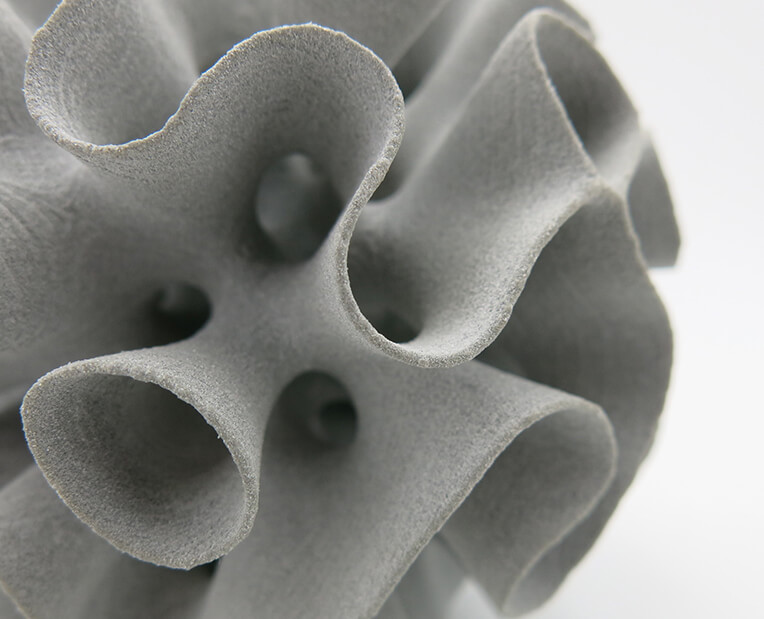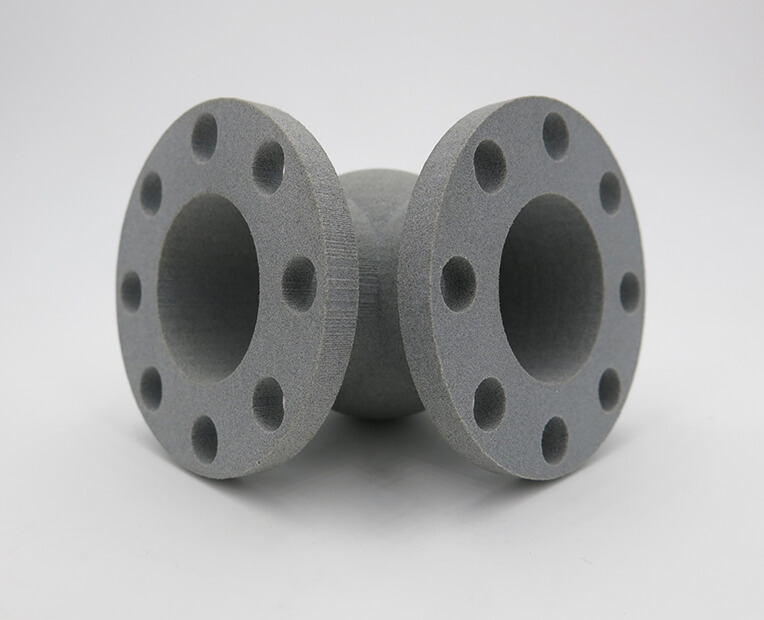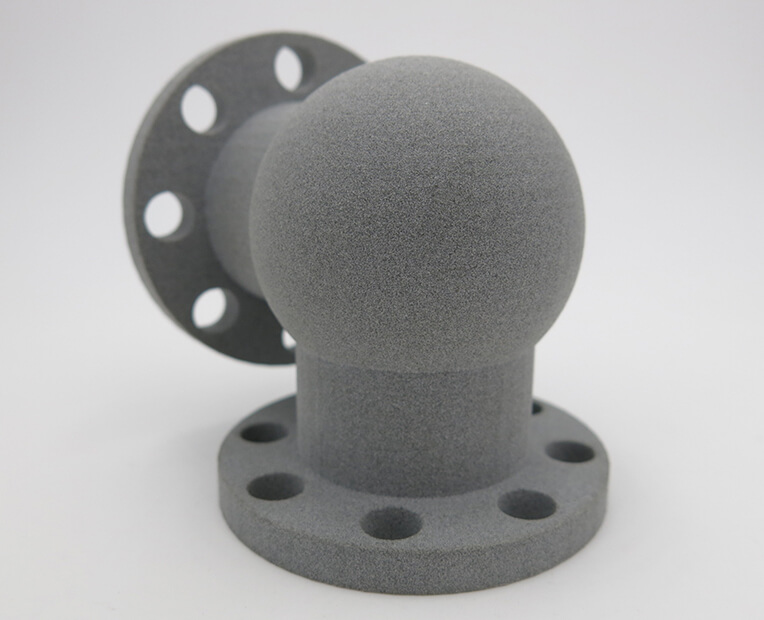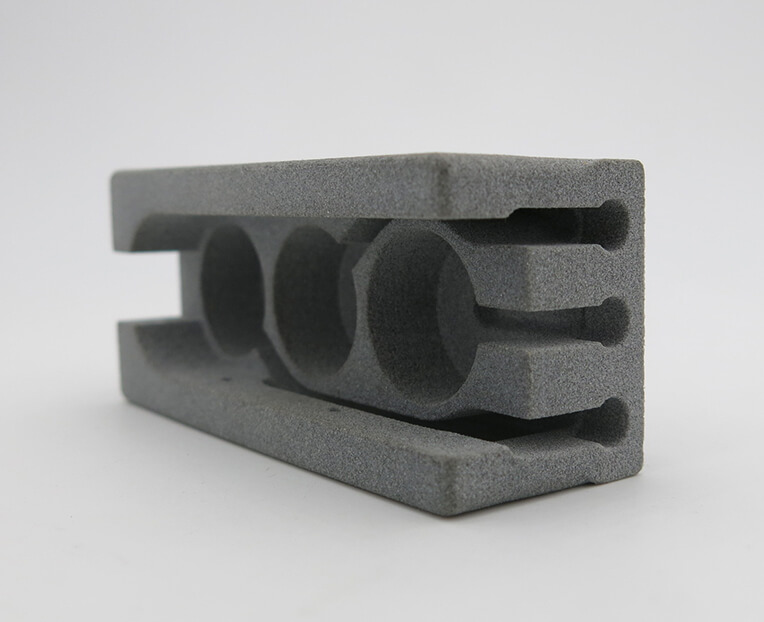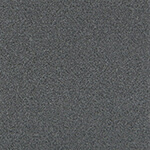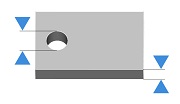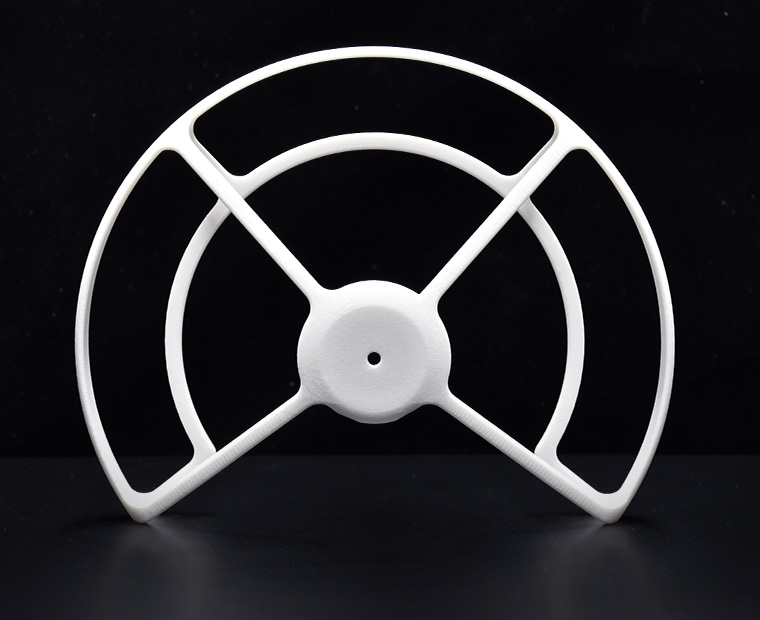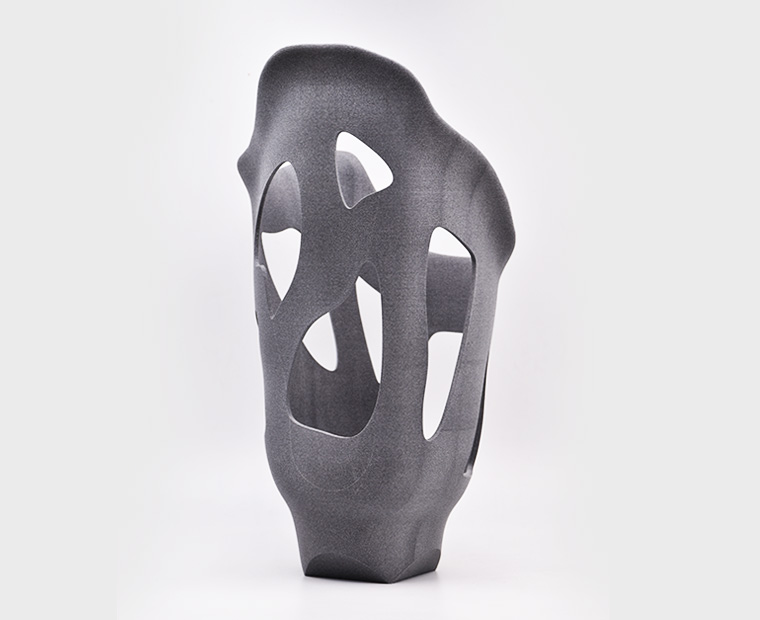Home » 3D Printing Materials » SLS technology » Nylon PA12 (grey)
Nylon PA 12 (grey) 3D printing material
From rapid prototyping to production, discover all benefits of plastic 3D printing with SLS technology using our Nylon PA12 (grey) material. Get all information and advice to help you print your 3D model in our Nylon PA 12 (grey) plastic material.
From rapid prototyping to production, discover all benefits of plastic 3D printing with SLS technology using our Nylon PA12 (grey) material. Get all information and advice to help you print your 3D model in our Nylon PA 12 (grey) plastic material.
Colors
Finishes
Characteristics
Nylon PA12 (grey) Material Guide
What is Nylon PA12 (grey)?
The grey Nylon PA12 (grey plastic) objects printed through Sculpteo are created from a fine grey polyamide powder, more commonly known as nylon. The material is both solid and flexible, unlike some of the other materials offered by Sculpteo.
Grey PA12 (grey plastic) is great for both experienced professionals and beginning designers because of its high precision and low cost. Unpolished, the material is grey, granular, and somewhat porous – these options can be further refined with Sculpteo’s in house polishing processes. It is also possible to polish and paint your objects at home using material-specific techniques.
To learn more, refer to our paragraph about finishes and colors for polyamide models.
What can you do with this Nylon PA12 (grey)?
Grey Polyamide offers great flexibility when 3D printing, especially complex models, as it is flexible and durable. As a result, the objects in this material have a wide range of uses from mechanical (prototypes, geared systems, articulated objects, etc.), ornamental, or even educational (bone structures, etc.).
Technical properties of grey polyamide change depending on the thickness of your model. With a 0,8 mm wall thickness, your model will be flexible. With a 2 mm wall thickness, it will be rigid. With regards to water qualities, grey polyamide is water-resistant but not waterproof. Thus the 3D object must not rest in contact with water for extended periods of time. In terms of temperature, if the grey Nylon PA12 (grey plastic) is subjected to heat above 120°C (248°F), it is possible that the physical form of the object can significantly altered. The somewhat rough surface of grey polyamide objects can attract dirt. This can often be remedied with soapy water and a cloth, letting it dry thoroughly. The objects are coloured throughout their whole volume, which makes them resistant against scratches and abrasion.
Pricing
The printing price of your design is calculated automatically the moment it is uploaded. As you modify your object (changing material, finishing, size, using batch control or hollowing feature, etc.) you will note that the price changes automatically. The pricing is based on a series of factors, including total volume, object size, and bounding box – to name a few.
Keep in mind that adding finishing will extend the processing time. The estimated shipping time is also calculated automatically as the object is uploaded and each time you make a modification on it. Delivery time should be added to processing time.
For more information, check our pricing page.
What is the 3D printing process for our Nylon PA12 (grey)?
Once you transfer your 3D model and submit your order on our website, it is received by a Sculpteo team member, who expertly places the model into the next available batch. The object is then printed through one of our EOS P395 or EOS P396.
SLS uses a highly specific laser that sinters thin layers of our Nylon PA12 (grey plastic) powder together one layer at a time. After each round of lasering, the printing bed is lowered and another layer of powder is evenly swept across the top for another round of sintering. This process is repeated until the object is completed.
What are the finishing options available for this 3D printing material?
There are are two finishing options available:
- Raw: sandblasted but unpolished, surface remains somewhat rough, most economical.
- Polished: polished through mechanical polishing, smoother to touch, layers still somewhat visible on rounded objects.
Standard layer thickness: 100 µm
Accuracy : ± 0.45% (minimum of ± 0.45 mm)

| Maximum size unpolished | 190 x 240 x 315 mm |
| Maximum size polished | 190 x 240 x 315 mm x+y+z ≤ 540 mm |
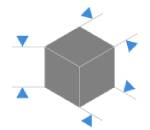 The maximum size of your models are limited by the physical size of our 3D printers – nothing can be printed larger than the printer bed. The same goes for our polishing tanks – if it doesn’t fit, it can’t be used.
The maximum size of your models are limited by the physical size of our 3D printers – nothing can be printed larger than the printer bed. The same goes for our polishing tanks – if it doesn’t fit, it can’t be used.
There is no minimum size for polyamide prints, keeping in mind minimum thickness for walls and structural aspects, to ensure the object will not break is 0.8 mm.
| Minimum wall thickness (flexible) | 0.8mm
|
| Minimum wall thickness (rigid) | 2mm
|
| Minimum wall thickness stemmed elements | 0.8mm with support
|
| Minimum wall thickness particular design aspects | 1-2mm |
The walls of your design must adhere to a minimum thickness of 0.8 mm in order to guarantee the structure will not break. If the walls of your model are less than 0.8 mm, you can add a support structure to maintain stability.
A stemmed element is a design aspect which is at least twice as long as it is thick. For unsupported and stemmed elements or parts of the design with a particular design constraint, it is also important to respect a minimum thickness of 1 mm in order to guarantee the object will not break.

Add a support structure to maintain stability. For example, if you are modelling a bust of a person, you can attach thin aspects of the design like the ears in more places around the model’s head. Doing that will avoid cantilevered and easily breakable elements in the final print.
With a 0.8 wall thickness, your design will be slightly flexible. To obtain more rigidity, we advise a 2mm wall thickness.

Thin walls supporting large, heavy Nylon PA12 (grey plastic) models can warp under the weight of itself.
Sculpteo offers an online solidity check tool which highlights parts of the print that may be too thin for a print. From there you are able to tweak your design in order to create an object that is an appropriate thickness. To use it, you just need to upload your 3D file, select your material and click on “Verification” tab.
It is also important to keep in mind that the object is to be printed into real life. Thus if a thin aspect is supporting something that is too heavy for it, it may break – even though it is possible within the physics provided by your 3D modeling software. We recommend adding a bit of thickness to the places that will get a lot of handling, or that support the most weight.
Do not forget

Keep in mind that our solidity check tool does not detect physical aberrations such as floating parts, unstable position, parts supporting too much weight relative to their thickness, etc. Particular care must be given to the geometry of your design and the most stressed parts must be thickened.
| Minimum size of details | 0.3 mm |
| Minimum height and width details | Embossed : 0.4 mm
|
| Minimum height and width for a readable text | 0.5mm |
| Enlargement ratio | 1/1
|
A detail’s minimum precision is mainly determined by the resolution of our 3D printers. However, during the cleaning process, a fine layer of detail can also be lost. In order for a detail and text to be visible we recommend following our recommended sizes at the very least.
It’s possible that particularly fine embossings and engravings will not be visible, as the carving could get filled with excess powder that is later unable to be cleaned out. If an embossing or engraving is an essential part of your design we recommend making them as deep as possible. To ens
| Enclosed parts ? | Yes |
| Interlocking parts ? | Yes |

Our grey Nylon PA12 (grey plastic) material has the ability to print the most complex designs of our materials. An example of a complex design is a volume enclosed within another volume, like a chain or maraca. Our 3D printers have the ability to 3D print a fully interlocked chain our of the printer, with no support structures to remove.
| Minimum spacing between fixed walls | 0.5 mm |
| Minimum clearance between parts | 0.5 mm |

For a successful 3D print a minimum clearance between objects is required to allow excess material to be sand blown out. If this space is not left within the design, the object will be a solid. This is particularly important for articulated objects – as the space left between the walls will define the object’s ability to move.
Clearance should be at least 0.5 mm, however that is the minimum for small objects. Larger objects require more space between their parts. This is due to the SLS printing process. Our printer beds are heated during the process, and larger objects are heated for longer periods. A small space between large objects runs the risk of melting together as it remains under heat for a long period of time. In some other cases, holes should be added to allow us to drain for the excess powder material within the clearance.
| Assembly ? | Yes |
| Minimum space | 0.5 mm |

Objects printed in polyamide can be printed to be assembled. As long as a width of at least 0.5 mm is left between the different parts of the object.
| Hollowing ? | Yes |
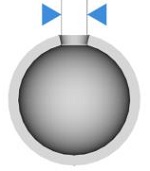
Our online hollowing optimization tool has the ability to greatly reduce the price of a print by reducing the amount of material used.
Using the tool requires adding two holes to your model, which will serve as the drain for the excess powder material within the object. The minimum size of these holes is determined by our website. Otherwise it is possible to hollow your object manually in your 3D modeling software.
| Files with Multiple Objects ? | No |

It is not possible to 3D print a 3D file containing several objects with our 3D plastic printers.
Ready to 3D print with Nylon PA12 (grey)?
With Sculpteo’s online 3D printing service you’re just a few clicks away from professional Nylon PA 12 (grey) 3D printing. Your 3D model is printed with the highest quality and delivered straight to your door.
Get started now!


 Connect with Google
Connect with Google Connect with Facebook
Connect with Facebook